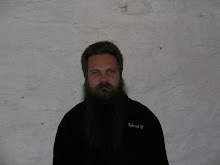fredag, februari 08, 2008
Simple mathematics
 I quote professor Michael D. Bordo, who is the author of some articles about the Gold Standard.
I quote professor Michael D. Bordo, who is the author of some articles about the Gold Standard."For example, the United States fixed the price of gold at $20.67 per ounce; Britain fixed the price at £3/17s./10½d. per ounce. The exchange rate between dollars and pounds—the "par exchange rate"—necessarily equaled $4.867 per pound. "
Professor Bordo obviously has some problems with simple mathematics.
£3/17s./10½d. equals £3,89375 and the more precise par exchange rate between Pound Sterling and US dollar during the hey-day of the gold standard was slightly more than $4,86556 per £. That "ought" to give the result that the at par rate between gold and US dollar was instead about $18,95 per ounce.
Another opportunity would be that the at par rate between gold and Pound Sterling was instead £4/4s./11½d. (approximatly £4,24792) per ounce which is the approximate result of the operation slightly more than 20,67 divided with slightly more than 4,86556.
The solution to the problem is that the UK £1 gold coin, the Sovereign, contained 113,0015975 grains of pure gold and that the US $10 gold coin, the Eagle, contained 232,2 grains of pure gold. That meens that £3/17s./10½d. is approximatly at par with one ounce of 22 carat gold, but that $20,67 is approximatly at par with one ounce of pure gold, just like £4/4s./11½d. is approximatly at par with one ounce of pure gold. Professor Bordo could have discovered that by just simply dividing 20,67 with 4,867. The difference between £4/4s./11½d. and £3/17s./10½d. approximatly equals the difference between 22 and 24 carats.
There are other errors in professor Bordo's articles about the gold standard to which I will return.
